In the final stages comes the verisimilitude, or the reality, of a large scale painting. Heck, in the final stages comes me being overjoyed. It’s been forever. It’s been a year and a half of agony—my own struggles, others critiques—a year and a half of scrutiny and revision and staring at the same painting. I’m ready for Daniel to be finished. Now it really looks like a major painting. Now it begins to work as a whole. Now people look at it to appraise it. But the artist, who has labored in love for the whole of it, is feeling the pull of the painting itself wanting to be finished.
I suppose it’s a little like letting the characters in your book write your story for you. The heroine has been thwarted in her goals the whole time, the end is in sight, and she wants the golden ring.
In the painting, each lion wants his own destiny. The den has been opened, and Daniel wants to get out like never before. He’s grateful to God for the very air he breathes and he doesn’t yell at the king who had him thrown in there, however kind his words were, I hope your God can save you. He knows he now has a future.
It is at this point, with only a few areas left to pull together that I am compelled forward beyond my physical tiredness and fight with the elements to bring out Daniel’s hair, the lift in his forehead, the shrubs at the top, the greenery and branches of the trees and shrubs that are almost above my reach. My bum shoulder is being stretched to its maximum capacity, and right there at the last, it was literally screaming at me, not wanting to function.
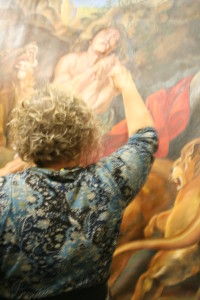 I can’t tell you how many times I thought the painting was finished before it was, or that “only one little stroke” wouldn’t take any time. Towards the end when my client was also getting antsy and wanting the work he’d paid major bucks for, we thought it was ready. Three men had moved it in and set it up. We thought it would take three to move it up to the front of my studio. However, instead, I tore down my studio to slide Daniel up front and into place right in front of my big show windows where the Southern sun shines in and lights Daniel up. I pulled down 6 foot tables and we moved furniture, and just my husband and I slid the whole 5’ x 8’ x 8’ easel, with Daniel attached, up and in place. An epic battle had ended. But those niggling little details—so many yet to be done.
I can’t tell you how many times I thought the painting was finished before it was, or that “only one little stroke” wouldn’t take any time. Towards the end when my client was also getting antsy and wanting the work he’d paid major bucks for, we thought it was ready. Three men had moved it in and set it up. We thought it would take three to move it up to the front of my studio. However, instead, I tore down my studio to slide Daniel up front and into place right in front of my big show windows where the Southern sun shines in and lights Daniel up. I pulled down 6 foot tables and we moved furniture, and just my husband and I slid the whole 5’ x 8’ x 8’ easel, with Daniel attached, up and in place. An epic battle had ended. But those niggling little details—so many yet to be done.
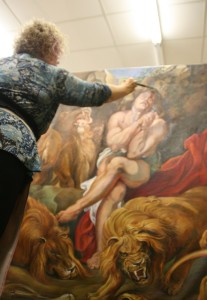 You can see from here the depth already in the figures. Shadows have been enhanced by multiple layers of glazes, the snarling lion’s teeth have been sharpened and darkened. The wrinkles in the snarling lion’s face have been smoothed once again, the whiskers quickly scumbled over the face as they emerge from the black freckle which starts it. A hotter red has been added to strengthen the robe’s impact. I am fiddling at this point with the finest detail, the separations in the fingers, adjustment of the fingernails, highlights in Daniel’s hair, in short, the part that most artists want to begin with and want to see first.
You can see from here the depth already in the figures. Shadows have been enhanced by multiple layers of glazes, the snarling lion’s teeth have been sharpened and darkened. The wrinkles in the snarling lion’s face have been smoothed once again, the whiskers quickly scumbled over the face as they emerge from the black freckle which starts it. A hotter red has been added to strengthen the robe’s impact. I am fiddling at this point with the finest detail, the separations in the fingers, adjustment of the fingernails, highlights in Daniel’s hair, in short, the part that most artists want to begin with and want to see first.
In this position on the ladder, miserable, every time a rock seems flat in the upper right, I add a facet. The slightest shadow I find missing on Daniel’s face, I add.
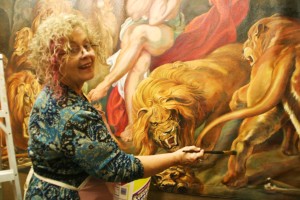 But up front here in my studio the painting which has stayed in the back the whole year and a half is bathed with golden light and truly comes alive. At this point, Daniel’s story is illustrated once again, an epic battle that began with petty jealousy over Daniel’s success, that took him through the legal decree that anyone who worshipped a God other than the king should be killed, but who won the love and the favor of the king who hated what he had done himself to Daniel—and who, when God had been able to save Daniel, declared that everyone should served Daniel’s God. Well, wow. That’s a story worth pulling out of the 1600’s and illustrating again. An old story made new.
But up front here in my studio the painting which has stayed in the back the whole year and a half is bathed with golden light and truly comes alive. At this point, Daniel’s story is illustrated once again, an epic battle that began with petty jealousy over Daniel’s success, that took him through the legal decree that anyone who worshipped a God other than the king should be killed, but who won the love and the favor of the king who hated what he had done himself to Daniel—and who, when God had been able to save Daniel, declared that everyone should served Daniel’s God. Well, wow. That’s a story worth pulling out of the 1600’s and illustrating again. An old story made new.


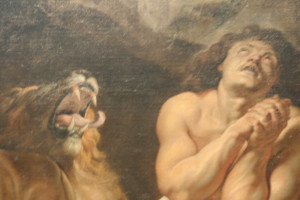
![1175134_595792013806191_1972117313_n[2]](https://joriginals.net/wp-content/uploads/2013/12/1175134_595792013806191_1972117313_n2-300x216.jpg)
![1378769_606341199417939_456327840_n[2] - Copy](https://joriginals.net/wp-content/uploads/2013/12/1378769_606341199417939_456327840_n2-Copy.jpg)
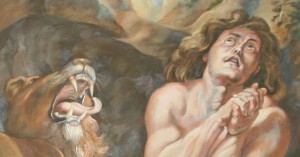
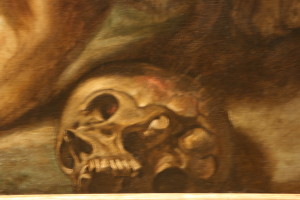
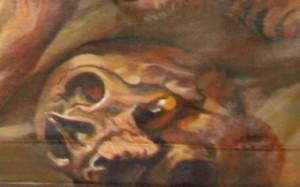
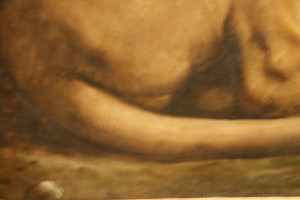
![541886_10151867873104694_1243631060_n[1]](https://joriginals.net/wp-content/uploads/2013/12/541886_10151867873104694_1243631060_n1-300x168.jpg)
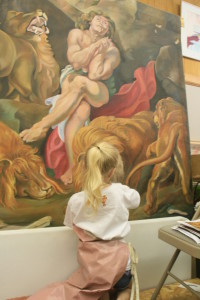
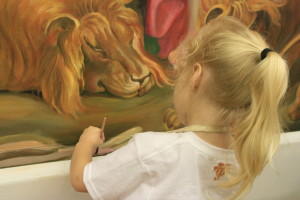
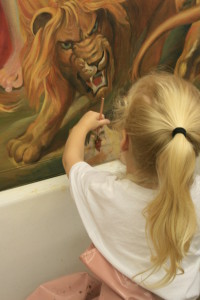
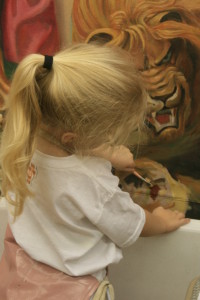
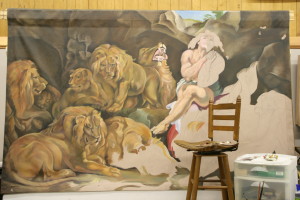
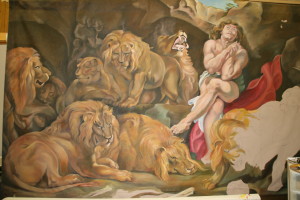
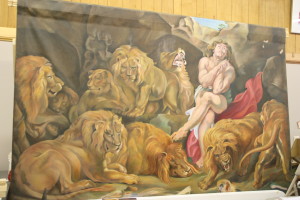
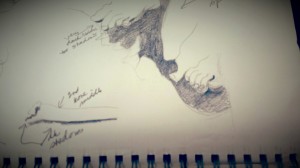
![1175134_595792013806191_1972117313_n[1]](https://joriginals.net/wp-content/uploads/2013/12/1175134_595792013806191_1972117313_n1-168x300.jpg)
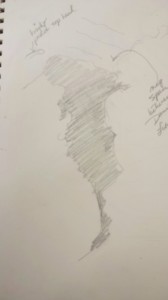
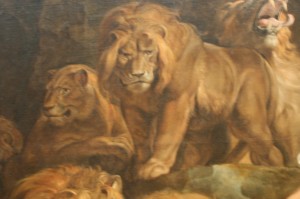
![1002335_581905468528179_106879984_n[3]](https://joriginals.net/wp-content/uploads/2013/12/1002335_581905468528179_106879984_n3-300x113.jpg)
![1098305_586382878080438_1748309898_n[1]](https://joriginals.net/wp-content/uploads/2013/12/1098305_586382878080438_1748309898_n1-168x300.jpg)

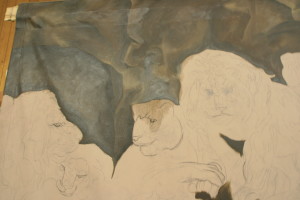
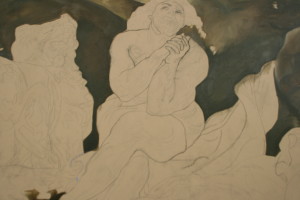
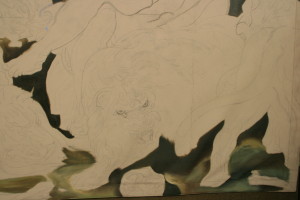
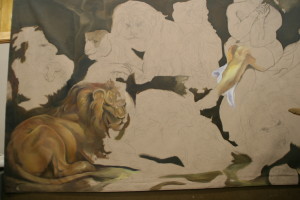

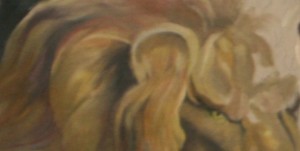
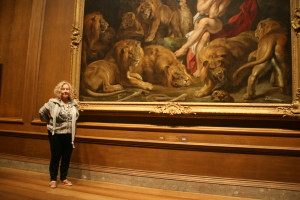
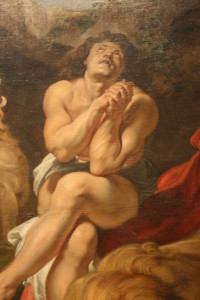 the centerpiece of the Biblical story, at his moment of deliverance, when the King looked in and asked, “Daniel, was your God able to deliver you?” Even in the presence of the snarling lions, it is obvious this was not his moment of greatest fear, but was at a moment when he had a certain amount of peace and knew that the lions’ mouths were indeed shut, as the account goes. Emotion, attitude, and composition joined in this work of Rubens, and I had to study the emotional impact. I took particular note of the lighting and shadowing while I was there.
the centerpiece of the Biblical story, at his moment of deliverance, when the King looked in and asked, “Daniel, was your God able to deliver you?” Even in the presence of the snarling lions, it is obvious this was not his moment of greatest fear, but was at a moment when he had a certain amount of peace and knew that the lions’ mouths were indeed shut, as the account goes. Emotion, attitude, and composition joined in this work of Rubens, and I had to study the emotional impact. I took particular note of the lighting and shadowing while I was there. Certainly in the extreme detail alone I had my work cut out for me. The hardest act an artist makes in the initial phases is to strip away all of the detail in his or her mind and take the figures down to their largest shapes and color. Think about it—you just can’t paint around a freckle or a hair, so it is useless to try setting that type of detail in in the beginning. However, Peter Paul gave his successors a road map in creating his wonderfully complex composition of organic shapes.
Certainly in the extreme detail alone I had my work cut out for me. The hardest act an artist makes in the initial phases is to strip away all of the detail in his or her mind and take the figures down to their largest shapes and color. Think about it—you just can’t paint around a freckle or a hair, so it is useless to try setting that type of detail in in the beginning. However, Peter Paul gave his successors a road map in creating his wonderfully complex composition of organic shapes.